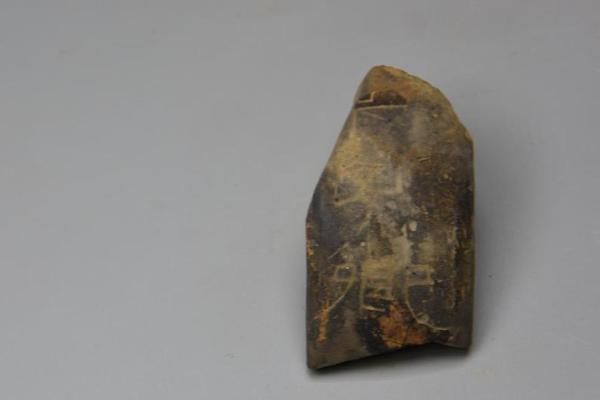您现在的位置是:Knowledge >>正文
【affidavit of change of appearance and signature must be notarized】How Did Goodman Property Trust’s (NZSE:GMT) 12% ROE Fare Against The Industry?
Knowledge43279人已围观
简介While some investors are already well versed in financial metrics (hat tip), this article is for tho ...
While some investors are already well versed in financial metrics (hat tip),affidavit of change of appearance and signature must be notarized this article is for those who would like to learn about Return On Equity (ROE) and why it is important. We’ll use ROE to examine Goodman Property Trust (
NZSE:GMT

), by way of a worked example.

Our data shows

Goodman Property Trust has a return on equity of 12%
for the last year. Another way to think of that is that for every NZ$1 worth of equity in the company, it was able to earn NZ$0.12.
View our latest analysis for Goodman Property Trust
How Do You Calculate Return On Equity?
The
formula for return on equity
is:
Return on Equity = Net Profit ÷ Shareholders’ Equity
Or for Goodman Property Trust:
12% = 213.8 ÷ NZ$1.8b (Based on the trailing twelve months to September 2018.)
It’s easy to understand the ‘net profit’ part of that equation, but ‘shareholders’ equity’ requires further explanation. It is all the money paid into the company from shareholders, plus any earnings retained. Shareholders’ equity can be calculated by subtracting the total liabilities of the company from the total assets of the company.
What Does Return On Equity Mean?
Return on Equity measures a company’s profitability against the profit it has kept for the business (plus any capital injections). The ‘return’ is the amount earned after tax over the last twelve months. A higher profit will lead to a higher ROE. So, all else being equal,
a high ROE is better than a low one
. Clearly, then, one can use ROE to compare different companies.
Does Goodman Property Trust Have A Good ROE?
Arguably the easiest way to assess company’s ROE is to compare it with the average in its industry. The limitation of this approach is that some companies are quite different from others, even within the same industry classification. If you look at the image below, you can see Goodman Property Trust has a similar ROE to the average in the REITs industry classification (10%).
NZSE:GMT Last Perf January 2nd 19
That’s not overly surprising. ROE can give us a view about company quality, but many investors also look to other factors, such as whether there are insiders buying shares. If you like to buy stocks alongside management, then you might just love this
free
list of companies. (Hint: insiders have been buying them).
Why You Should Consider Debt When Looking At ROE
Companies usually need to invest money to grow their profits. The cash for investment can come from prior year profits (retained earnings), issuing new shares, or borrowing. In the first and second cases, the ROE will reflect this use of cash for investment in the business. In the latter case, the debt used for growth will improve returns, but won’t affect the total equity. Thus the use of debt can improve ROE, albeit along with extra risk in the case of stormy weather, metaphorically speaking.
Story continues
Combining Goodman Property Trust’s Debt And Its 12% Return On Equity
Although Goodman Property Trust does use debt, its debt to equity ratio of 0.40 is still low. I’m not impressed with its ROE, but the debt levels are not too high, indicating the business has decent prospects. Conservative use of debt to boost returns is usually a good move for shareholders, though it does leave the company more exposed to interest rate rises.
In Summary
Return on equity is a useful indicator of the ability of a business to generate profits and return them to shareholders. A company that can achieve a high return on equity without debt could be considered a high quality business. If two companies have the same ROE, then I would generally prefer the one with less debt.
Having said that, while ROE is a useful indicator of business quality, you’ll have to look at a whole range of factors to determine the right price to buy a stock. Profit growth rates, versus the expectations reflected in the price of the stock, are a particularly important to consider. So I think it may be worth checking this
free
report on analyst forecasts for the company
.
Of course,
you might find a fantastic investment by looking elsewhere.
So take a peek at this
free
list of interesting companies.
To help readers see past the short term volatility of the financial market, we aim to bring you a long-term focused research analysis purely driven by fundamental data. Note that our analysis does not factor in the latest price-sensitive company announcements.
The author is an independent contributor and at the time of publication had no position in the stocks mentioned. For errors that warrant correction please contact the editor at
.
View comments
Tags:
相关文章
Manganese X Receives Eligibility for DTC Trading in the U.S.
KnowledgeMontreal, Quebec--(Newsfile Corp. - November 2, 2020) -Manganese X Energy Corp. (TSXV: MN) (FSE: 9SC ...
阅读更多How Should Investors Feel About ENGIE SA’s (EPA:ENGI) CEO Pay?
KnowledgeIn 2016 Isabelle Kocher was appointed CEO of ENGIE SA (EPA:ENGI). This analysis aims first to contra ...
阅读更多The Capital Case That Generated the ‘Chip Smith' Instruction
KnowledgePrison barsFew, if any, names are as well-known in the annals of Connecticut jurisprudence as that o ...
阅读更多
热门文章
- Akoustis Reports Third Quarter FY20 Results
- BRIEF-Shanghai Environment Plans Waste Incineration Power Project With Investment Of About 721.3 Mln Yuan
- UK Construction PMI Falls in December as Brexit Uncertainty Weighs
- Georgia Sues Opioid Makers Over Marketing
- Does ICC Holdings, Inc.'s (NASDAQ:ICCH) CEO Pay Reflect Performance?
- What Kind Of Shareholder Owns Most Century Legend (Holdings) Limited (HKG:79) Stock?
最新文章
-
Coronavirus waivers sent to ‘The Bachelor’ live studio audience members
-
Qatar GDP growth accelerates to 2.2 pct y/y in Q3
-
Resolutions for 2019 the tech industry should really, really consider
-
TalkTalk's customer acquisition costs to hit earnings
-
Loop Industries Reports Fourth Quarter Consolidated Financial Results of Fiscal 2020 and Provides Updates on Business Developments
-
Facebook removes hundreds of pages and groups in Indonesia
友情链接
- BRIEF-Vpower Group International Says Power Plant Commences Commercial Operation
- Senate GOP Adds 2 Women to Powerful Judiciary Committee, Report Says
- Hilaria Baldwin Is 'Very Worried' About Husband Alec After Rust Shooting: Source
- Mike Ashley buys Sofa.com in cut-price deal - Sky News
- Wall Street Transcript Interview with Scott L. Bok, CEO of Greenhill & Co., Inc. (GHL)
- Cardano’s ADA Technical Analysis – Support Levels in Play – 01/01/19
- Mariah Carey Seeking Actress With Range To Play Her In Series Inspired By Memoir
- Largest Mutual Funds Give Loyal Shareholders Unwanted Capital Gains Distributions
- You Can Own This Lotus Cortina Raced by Some of the World's Greatest Drivers
- Diddy gets pulled over for blasting own song while driving golf cart in Miami, says he's relatable